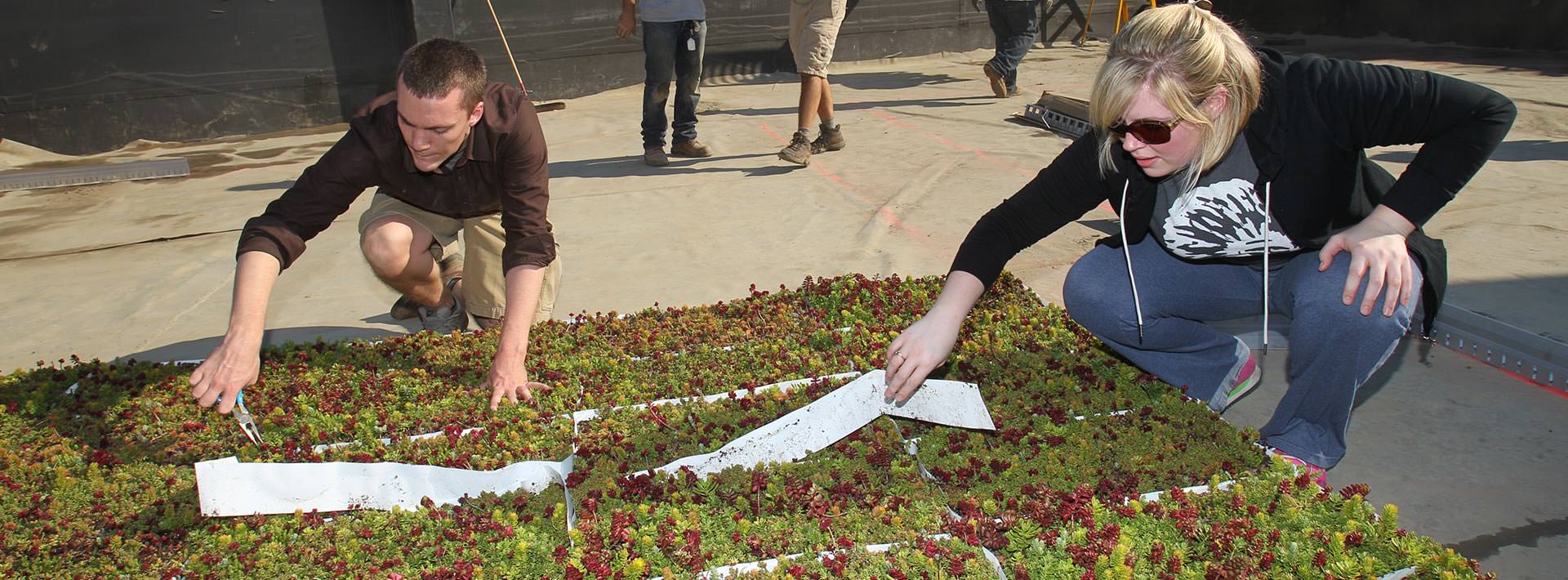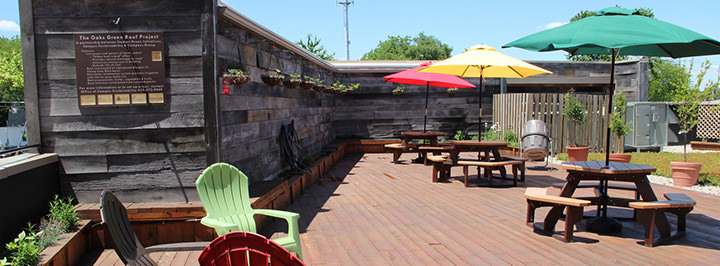The Oaks Green Roof
The Oaks Dining Center features a dual purpose Green Roof; to add to the sustainability features of the building and to educate the BGSU community. Green roofs replace conventional roofs with garden of a variety of plants which have many environmental and economic benefits (see below).
The Green Roof is not open to the public, but we host many tours of the space for individuals to groups of up to 30 people. Tours can be for classes, student organizations, offices, faculty, staff, summer camps, or any other type of person! Email Us: greenbg@bgsu.edu to set up a tour, today!


For more photos of the Green Roof, visit our Facebook page
Features:
- Live-Roof green grid interlocking plant tray system made of Sedum
- Sedum is hardy, has local ground cover, is green 12 months out of the year, requires little to no water, and has many benefits (see below)
- Watering is done using a rainwater retention system
- Deck is made from repurposed Douglas fir
- Siding is Ohio barn siding
- Small solar panel array to assist with energy demands
- Track the Solar Panel Energy of the Green Roof!
- Picnic Tables are made from 100% recycled plastic bottles
- Lawn chairs are 100% recyclable resin
- Planters are used for perennials and a variety of vegetables and herbs
- Four dwarf fruit trees are planted in large pots
- Solar powered water fountain
- Composting bin for organic material
- Partially funded through Student Green Initiatives Fund (about 50%)
Benefits:
- Urban Heat Island mitigation
- Urban areas can have a 2-6 degree difference than surrounding rural areas. Green roofs help reduce this difference in urban environments saving on summertime peak energy demands, air conditioning costs, and heat-related illnesses.
- Reduction of Storm Water Run Off
- The sedum acts like a sponge and absorbs excess rain water
- The green roof filters water before returning it to the aquifer
- Habitat Recreation
- Plants attract birds, butterflies, and other flying wildlife
- Extension of Roof Life
- Acts as a protecting shield from the elements such as UV radiation, sun/drying effects, cracks, leaks, water damage, etc.
- It can extend the life of the roof by 200 to 300%
- Energy Conservation
- Reduces indoor temperatures 6-8 degrees in summer and acts as an additional insulating layer in the winter
- Saves money on HVAC costs
Updated: 12/08/2023 04:17PM
